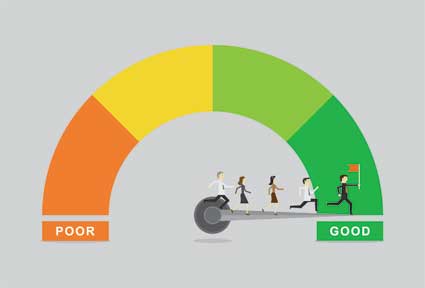What is the next Epidemic?
Most epidemiologists believe that the world is long overdue for an avian influenza of epidemic, likely pandemic proportions. There were three pandemics in the 20th century, beginning with the very deadly flu pandemic of 1918 that killed 40 million worldwide. The next occurred in 1957, killing 2 million people, and the Hong Kong flu in 1968 that killed 1 million people. For several years now, the world has been watching the possible outbreak of "Bird Flu" caused by H5N1.
The World Health Organization believes that the world is not adequately prepared for this strain of avian influenza. So far, it has killed almost 200 people.
Virtually all health experts believe that the world is overdue for the next pandemic. Because the population of the world is more than three times what it was in 1918, potentially 100 million or more people could die. The worst affected will be school-aged children and young healthy adults.
Pandemic Review:
- The outbreak is worldwide and swift.
- People have little or no immunity.
- There is no vaccine.
- Highly contagious, spreading from person to person.
- Causes very serious illness.
What IS avian flu?
This is a viral influenza that normally infects birds and occurs naturally among wild birds. Usually avian flu only infects birds and is highly pathogenic. This flu strain very rarely spreads from birds to people, and so far, the H5N1 strain does not spread easily human to human, but it has been documented to do so. When the avian flu infects people, the huge risk is that the virus will mutate and develop into a new virus that will spread easily from person to person.
Avian flu differs from the seasonal or common flu. Seasonal flu is a respiratory illness that can be transmitted from person to person, and each year a vaccine is available to prevent the general public from falling ill. Avian flu cannot be prevented by the annual flu vaccine that is available every fall. This flu is extremely contagious and there is neither immunity, nor vaccine. A pandemic vaccine cannot be produced until the new pandemic virus becomes known and is identified. It will take at least six months to develop, test, and produce a vaccine.
Avian flu can become pandemic because there is little natural immunity, and the disease can spread very quickly from person to person. Direct contact with infected birds, or by coming into contact with surfaces or objects contaminated by the feces of infected birds. This is currently the main route of human infection. Scientists are afraid that once humans contract the disease, it will mutate and become a highly contagious human to human disease. This virus will not be controlled easily and fast spread around the world will result in a pandemic.
Avian flu spreads through the air. It spreads when people inhale airborne droplets that are released into the air when an infected person coughs or sneezes. It is also spread when an individual touches contaminated objects or people and then touches the face. This virus is further dangerous because the infected people can spread the virus one to two days before they actually exhibit symptoms and know that they are sick.
The U.S. Department of Health and Human Services believes:
- That the incubation period is about two days.
- People who become ill are contagious and can transmit infection for at least one day before they know they are ill. The first two days of the illness are the time of greatest transmission risk.
- Children shed the greatest amount of the virus and at greatest risk of transmission.
- People who are infected but asymptomatic can become carriers of the disease.
- The outbreak is expected to infect at least 30% of the population, with the highest percentage among school-aged children, approximately 40%.
Current pandemic risk:
When three conditions are met, a pandemic can start. A new influenza virus subtype must emerge, it must affect humans causing a serious illness, and it must spread easily and sustainable among humans. So far, the H5N1 virus meets the first two conditions as it is a new virus for humans and it has infected more than 325 humans, killing 60% of them. This situation will last as long as the virus circulates among the wild bird populations of the world. Evidence that a pandemic has started is when healthcare workers become infected with the disease from caring for H5N1 patients.
Avian Flu Symptoms:
There is nothing to cause anyone to suspect that the flu they have contracted is anything other than a typical seasonal flu as the symptoms are fever, cough, sore throat, and muscle aches. Other symptoms could include eye infections, acute respiratory distress, viral pneumonia, and multiple organ failure. A blood test is required to confirm avian influenza in humans.
Once the Pandemic Begins:
Most countries will scale back on their offers of inter-country assistance as they work to protect their local communities. The goal will be to try to stay healthy, prevent infection, and limit its spread.
You can limit the spread of avian flu:
- Continuously ventilate and clean the indoor air by opening windows and using ultraviolet air purifiers. This will minimize the number of virus particles in the air that are spread by sneezing or coughing.
- Minimize contact with other people. In order to stop the person to person spread of the disease, this is especially important. Avoid crowds and public contact whenever possible. Try to work from home, keep your kids home from school and avoid shaking hands. Avoid public transportation. During times of a pandemic you may want to wear a protective mask.
- Practice especially good hygiene. When washing hands, do so for with soap for at least 20 seconds. Try not to touch your face. That is quickest way to inoculate yourself for any sort of virus. Carry and use an alcohol-based hand sanitizer if you must go out in public and touch anything.
- Avoid direct contact with infected poultry.
- Keep pets indoors.
- Poultry products must be cooked thoroughly.
Effects of Avian Flu Pandemic:
In addition to the obvious fear for the deaths of millions of people, the global economy is sure to suffer. Estimates of losses from tourism, business, loss of employees, lack of goods/production are in the hundreds of billions, even trillions of dollars. While it might seem to be using scare tactics when it comes to predicting the next pandemic, the possible horrors of an avian influenza pandemic make such predictions a necessary step in order to prepare the general public. Once a pandemic begins, the only thing that can be done is to limit its spread. Such a disease is likely to cause more death and illness than any other public health threat we face today.






























